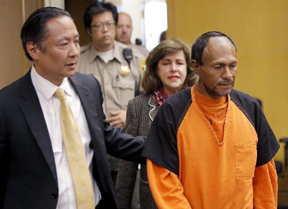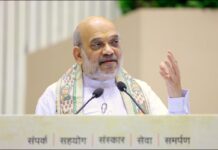
SAN FRANCISCO: Even if the suspect at the center of a national immigration debate accidentally fired the shot that killed a young woman on San Francisco’s Pier 14, it may not help his case.
A jury can still conclude that simply handling a semi-automatic pistol in a crowded tourist area was so reckless that he’s guilty of second-degree murder rather than a less severe manslaughter allegation, legal experts said.
“The defense in this case is deep in the hole,” said Stuart Hanlon, a long-time criminal defense attorney. “The facts are really bad.”
Kate Steinle, 32, was shot in the back on July 1 as she walked with her father’s arm around her shoulder, sightseeing along San Francisco’s popular waterfront.
When Juan Francisco Lopez-Sanchez was arrested nearby an hour later, he told police he accidentally fired the fatal shot after finding the gun wrapped in a T-shirt under a bench. The gun belonged to a federal agent who reported in June that it had been stolen from his car.
Lopez-Sanchez is in the country illegally and had been deported five times previously. After serving a four-year federal sentence for illegal re-entry, Lopez-Sanchez was transferred to San Francisco’s jail to face 20-year-old marijuana charges.
He was released in April after prosecutors dropped the pot counts and despite a federal request to detain him until immigration authorities could pick him up.
His release from jail sparked intense debate over a San Francisco sanctuary law that allows such requests to be ignored _ a policy many other cities and counties have also adopted. Steinle’s father traveled to Washington, D.C., after his daughter died in his arms to lobby lawmakers to abolish those policies
Prosecutors are seeking a second-degree murder conviction against Lopez-Sanchez that would carry a minimum sentence of 15 years to life. The maximum penalty for an involuntary manslaughter conviction is four years.
A judge is deciding whether to send Lopez-Sanchez to trial on the murder charge after hearing testimony this week.
Ballistic experts testified during the hearing that the shot ricocheted off a concrete walkway about four yards from the spot where Lopez-Sanchez was sitting before striking Steinle farther down the pier.
Lawyers for Lopez-Sanchez say the ricochet shows the shot was an accident.
Legal experts said the ricochet will help the defendant’s case, but he still needs to show he didn’t act in a “horribly dangerous way” to avoid a second-degree murder conviction, Stanford University law professor Robert Weisberg said.
“It certainly casts reasonable doubt on intent to kill,” Weisberg said of the ricochet.
Still, Weisberg said the mere handling of a gun in a crowded area popular with tourists “is a pretty good case for second-degree murder.”
William Portonova, a former federal prosecutor now in private practice in Sacramento, called the ricochet a good piece of evidence but agreed Lopez-Sanchez may have difficulty showing he didn’t act recklessly in handling the gun on the pier.
Jim Norris, former head of the San Francisco police’s crime lab, testified for the defense, saying the gun was pointed at the ground. Outside court, Norris told reporters he believed the shooting was accidental.
“If jurors really believe that he meant to shoot the ground, it could help with the verdict,” said Rory Little, a former federal prosecutor who teaches law at the University of California, Hastings College of Law.
Ballistic experts testified week that the gun’s trigger required five pounds of pressure to fire. “That’s not hair-trigger,” Hanlon said.
Hanlon said the high-profile nature of the case of the case doesn’t help Lopez-Sanchez either.
Hanlon and the other legal experts raised the possibility that the defense could try to move the case outside of San Francisco, because of extensive publicity.
Lopez-Sanchez’ attorney Matt Gonzalez said he would not seek to hold the trial outside the city if the judge decides to go ahead with one.
“We trust San Francisco’s jury pools,” Gonzalez said outside court. -AP






